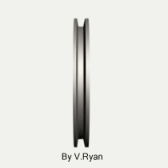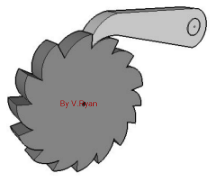Hey this is pthayn again, I recently posted on making a new mast tube. I now have another question. I am looking at several diagrams of sunfish and comparing them to my viking wanna-be sunfish. There is no eye strap or swivel block on the deck in front of the foot well on my boat, and there is no reference to one in the rigging instructions that came with the boat. My question is how necessary is a swivel block and can I install one from the outside of the hull, or will it need some support from the inside so that it doesn't tear out under the strain.
Thanks for all your help.
Thanks for all your help.






 Hmmm..., now that arrangement looks familiar.
Hmmm..., now that arrangement looks familiar. 



 I don't know about that..., it's more a matter of my lack of self-dicipline. With that arrangement you can't cleat-in when you're hiked out.
I don't know about that..., it's more a matter of my lack of self-dicipline. With that arrangement you can't cleat-in when you're hiked out. 